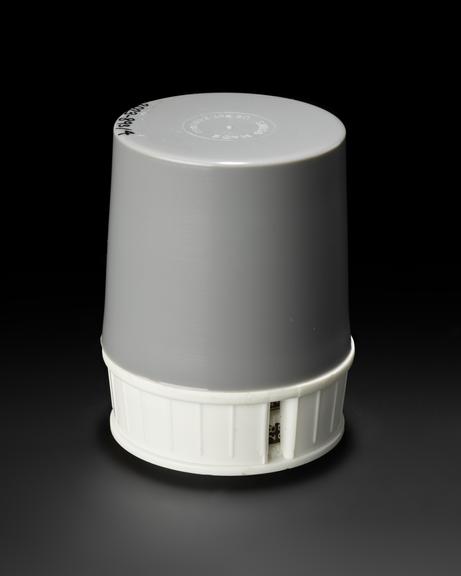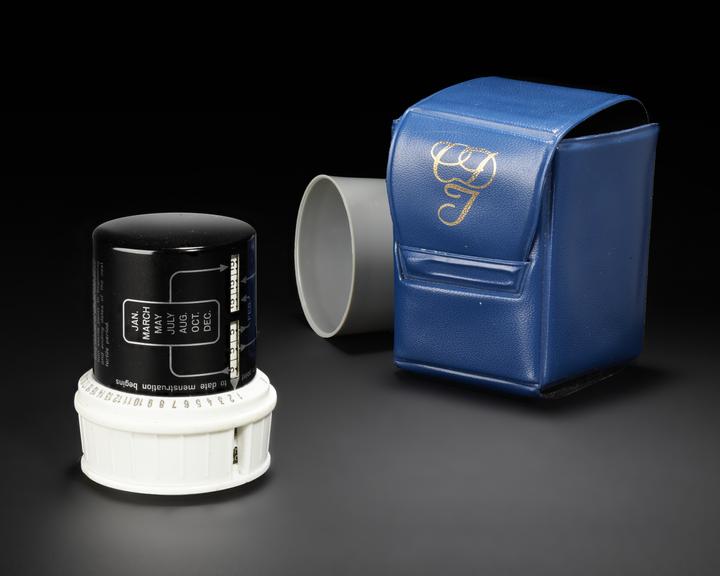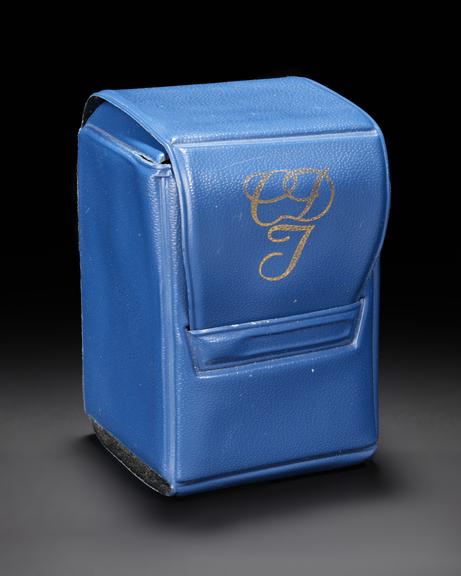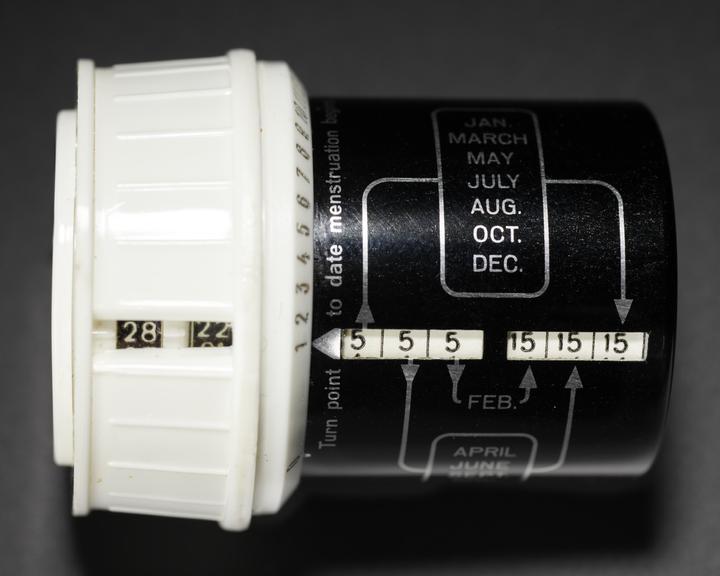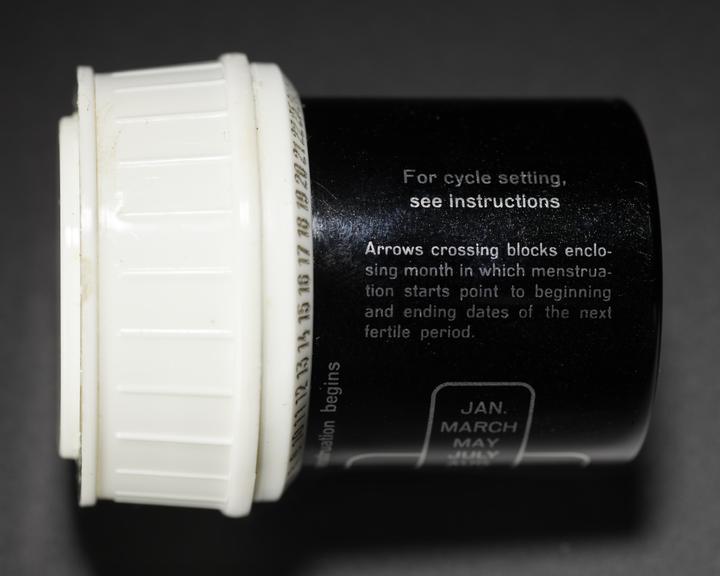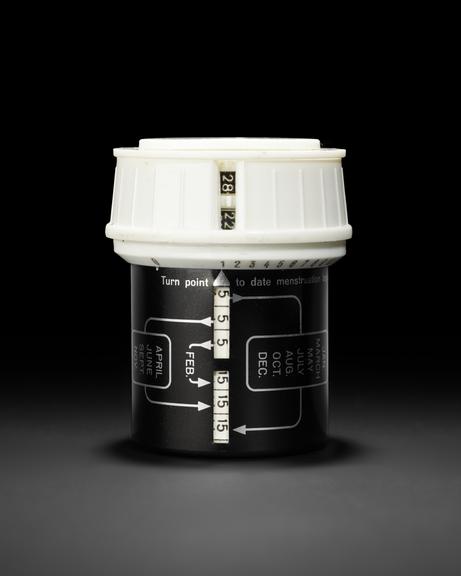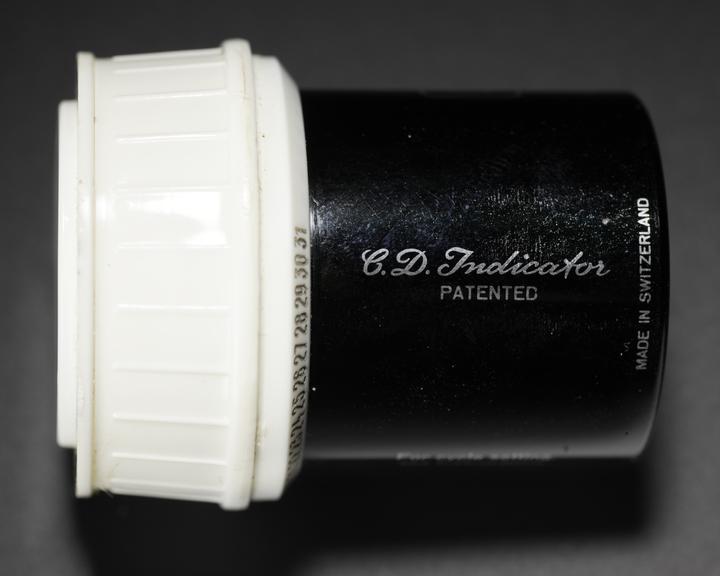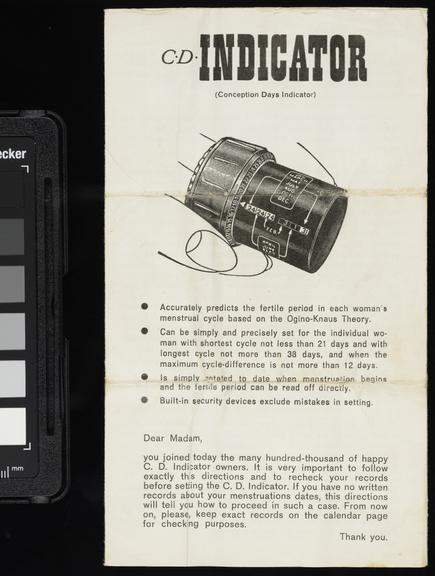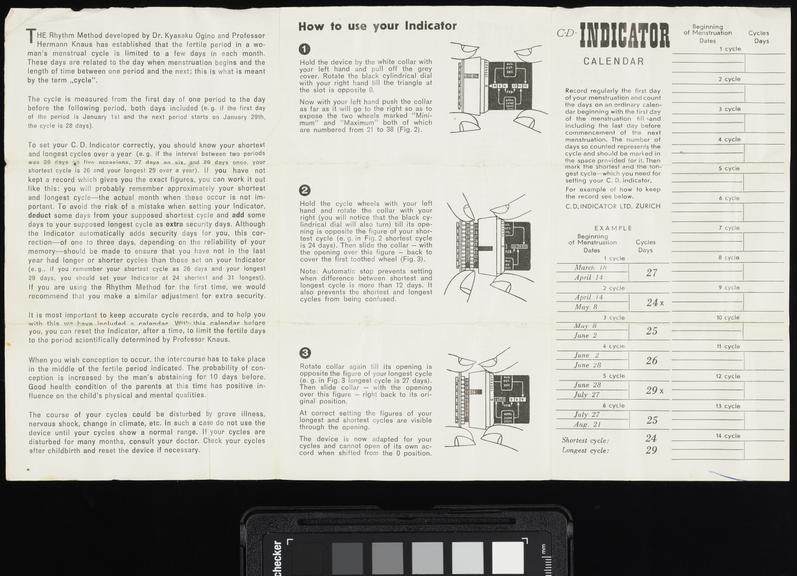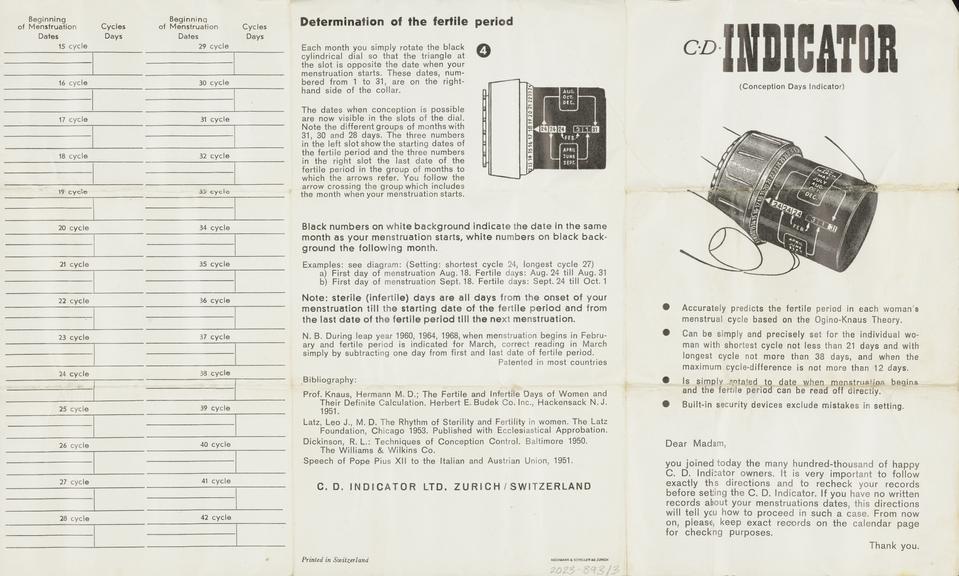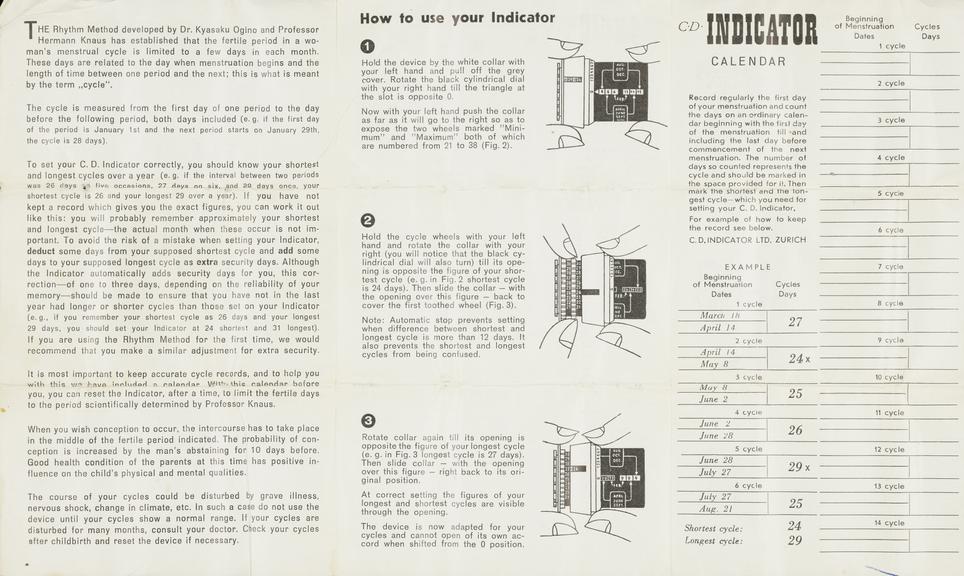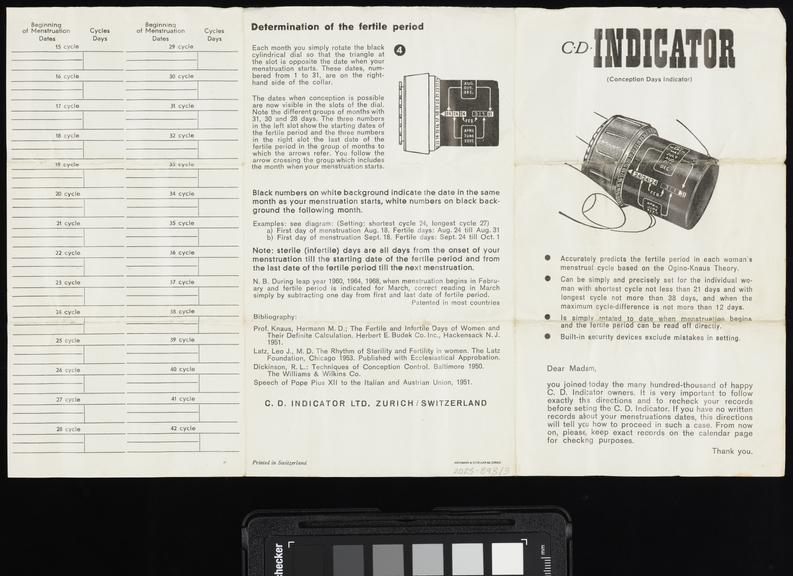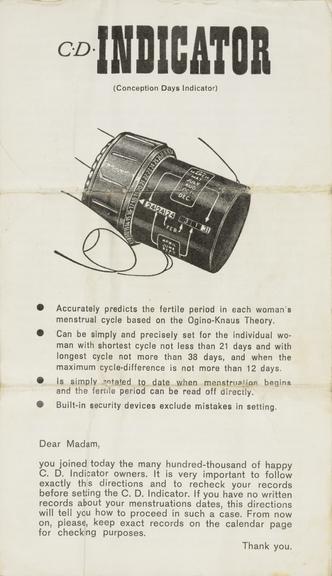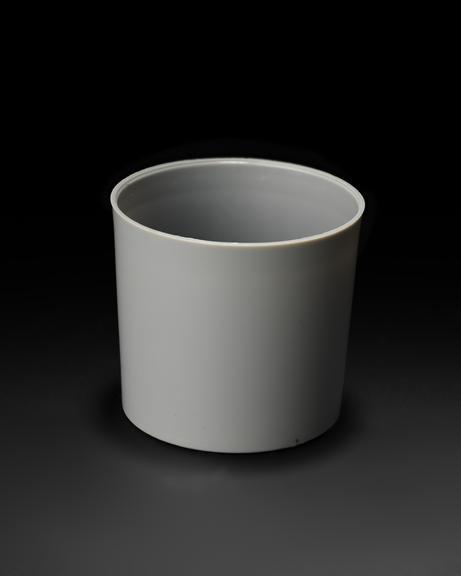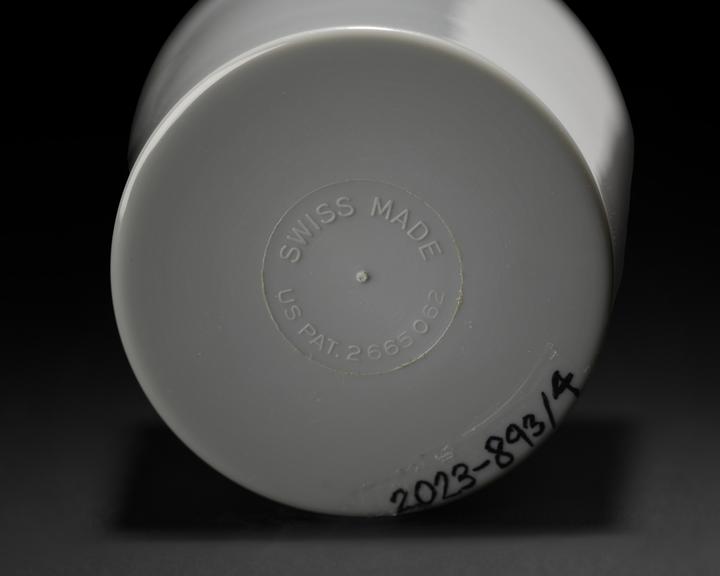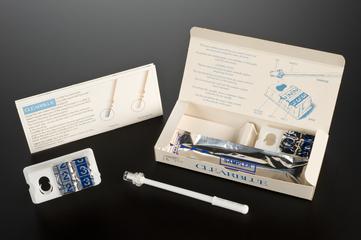Case for CD (Conception Days) Indicator
Blue plastic case for CD (Conception Days) Indicator, with 'CDI' on front in gold cursive lettering, C.D. Indicator Ltd, Zurich, Switzerland, 1954-1969
More
Developed in Vienna in 1931 and patented in the US by Paul Adler in 1954, this device was intended to assist couples using the rhythm method of birth control.
Calendar-based methods of contraception – timing unprotected sex to avoid pregnancy – became popular in the 1930s after gynaecologists Kyusaku Ogino in Japan and Hermann Knaus in Austria independently observed that ovulation occurs around fourteen days before the next menstrual period. Championed by Roman Catholic physicians, the approach was sanctioned by Pope Pius XII as a natural means of regulating procreation in 1951.
Numerous aids ranging from calendars, graphs, wheels, and slide rules were developed to help calculate the ‘safe period’ when a woman was not ovulating. Yet many did not account for variation in cycle lengths. The CD Indicator aimed to eliminate this disadvantage, by recording the user’s shortest and longest cycles and adding extra ‘security days’. Sales of the Swiss-made instrument proliferated worldwide before declining in the 1960s when the contraceptive pill became widely available.
This example belonged to Patricia Mary Blenkin (1935-1978), a pharmacist who worked at various hospitals in London, including St Stephen’s in Chelsea.
- Measurements:
-
overall: 63 mm x 40 mm x 35 mm,
- Materials:
- plastic (unidentified)
- Object Number:
- 2023-893/1
- type:
- case - container
- Image ©
- The Board of Trustees of the Science Museum


